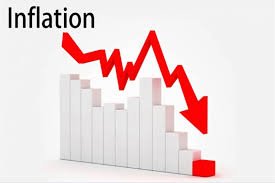The consumer inflation rate has dropped further to 8 percent in October 2025, marking the lowest level in four years and the tenth consecutive month of decline.
The latest Consumer Price Index (CPI) report released by Ghana Statistical Service (GSS) shows a significant reduction from the 9.4 percent recorded in September and a sharp 15.8 percentage point fall from 23.8 percent in December 2024.
On a monthly basis, inflation fell by 0.4 percent – suggesting that prices declined between September and October, a rare occurrence in recent years.
This sustained decline, said Government Statistician Dr. Alhassan Iddrisu, signals a firm path toward macroeconomic stability, reflecting the impact of tight fiscal measures, stable exchange rates and improved food supply conditions across the country.
He added that the figures show price stability is gradually returning and the key drivers that once fuelled double-digit inflation are now losing momentum.
Food vs non-food
Food inflation dropped to 9.5 percent in October from 11 percent in September, while non-food inflation eased to 6.9 percent from 8.2 percent in September.
However, while non-food prices recorded a slight month-on-month increase of 0.04 percent, the decline in food prices exerted stronger downward pressure on the overall inflation rate.
Goods vs Services
The inflation rate for goods slowed to 9.3 percent, down from 11.2 percent in September with prices falling by 0.7 percent month-on-month. Services inflation, on the other hand, edged down to 4.6 percent from 4.8 percent, though service costs rose marginally by 0.5 percent in the same period.
Given that goods make up nearly three-quarters of the CPI basket, continued easing of goods inflation offers a major relief to consumers.
GSS attributed this to improved domestic production, stronger currency stability and declining input costs in sectors such as food processing, household goods and transport.
Domestic vs imported goods
Locally produced items remained costlier than imports but also recorded sharper disinflation. Inflation for locally produced goods fell from 10.1 percent in September to 8 percent in October, while inflation for imported items rose slightly from 7.4 percent to 7.8 percent.
The report suggests that local supply chain adjustments and lower transportation costs contributed to easing domestic prices, even as some imported goods reflected modest price increases due to global market fluctuations.
Regional
Inflation continues to vary widely across regions. North East Region recorded the highest rate at 17.3 percent, driven by higher food prices and logistical challenges in moving goods. In contrast, Bono East Region registered the lowest inflation at 1.1 percent – reflecting better market access and price stability in that area.
Other regions with relatively high inflation included the Northern, Eastern and Upper West Regions, while Greater Accra and Ashanti remained below the national average.
Drivers of Inflation
The report identifies food and non-alcoholic beverages as the largest contributor to October’s inflation, accounting for about 42.7 percent of the CPI basket. Key items that drove inflation included smoked herrings, plantain (green), ginger, charcoal, vegetable oil and electricity.
Among non-food divisions, housing, water, electricity, gas and other fuels recorded inflation of 13.9 percent while recreation and culture saw 15.1 percent. The transport sector remained in deflationary territory at -4 percent, reflecting the recent stability in fuel prices.
Recommendations
GSS highlighted that the downward inflation trend provides an opportunity for households, businesses and government to consolidate gains toward economic recovery.
For households, the Service advised taking advantage of falling inflation to budget smarter, curb unnecessary spending and increase savings.
Businesses were urged to invest in efficiency, strengthen local sourcing and pass on cost savings to consumers to foster competitiveness.
The government, meanwhile, was encouraged to maintain fiscal discipline and focus on measures that keep food prices low, such as enhancing storage, irrigation, and transport infrastructure. Addressing regional disparities, particularly in northern parts of the country, was also emphasised as key to sustaining the disinflation momentum.
However, analysts warn that the pace of disinflation could slow in the coming months. Apakan Research projected a marginal uptick of consumer prices in October, citing higher ex-pump fuel prices, a 1.14 per cent rise in electricity tariffs and a weaker cedi, which depreciated by about 7 percent in September. Those factors, the firm said, could erode some of the disinflation gains if sustained.
Despite such risks, Apakan expects the Bank of Ghana’s Monetary Policy Committee (MPC) to maintain a dovish stance at its next meeting – forecasting a 300-basis-point rate cut to 18.5 percent. The research firm noted that moderating inflation and lower government funding needs could also lead to a decline in Treasury bill yields.
The continued fall in inflation places the country back within the central bank’s medium-term target band of 8 ± 2 percent. Analysts say maintaining this range will be crucial to restoring investor confidence and supporting growth.










